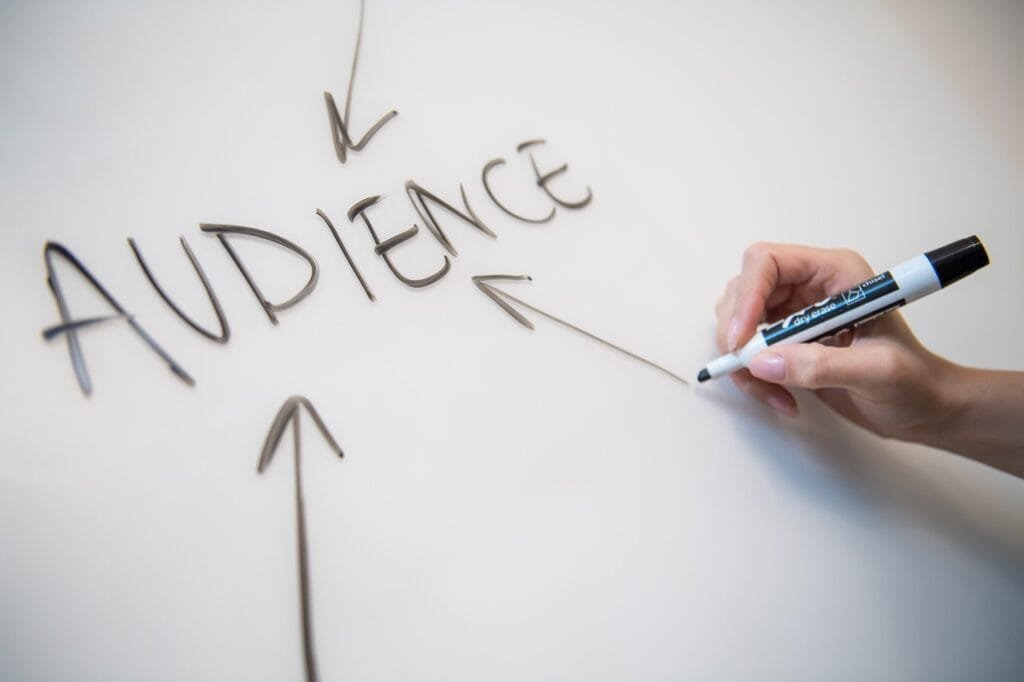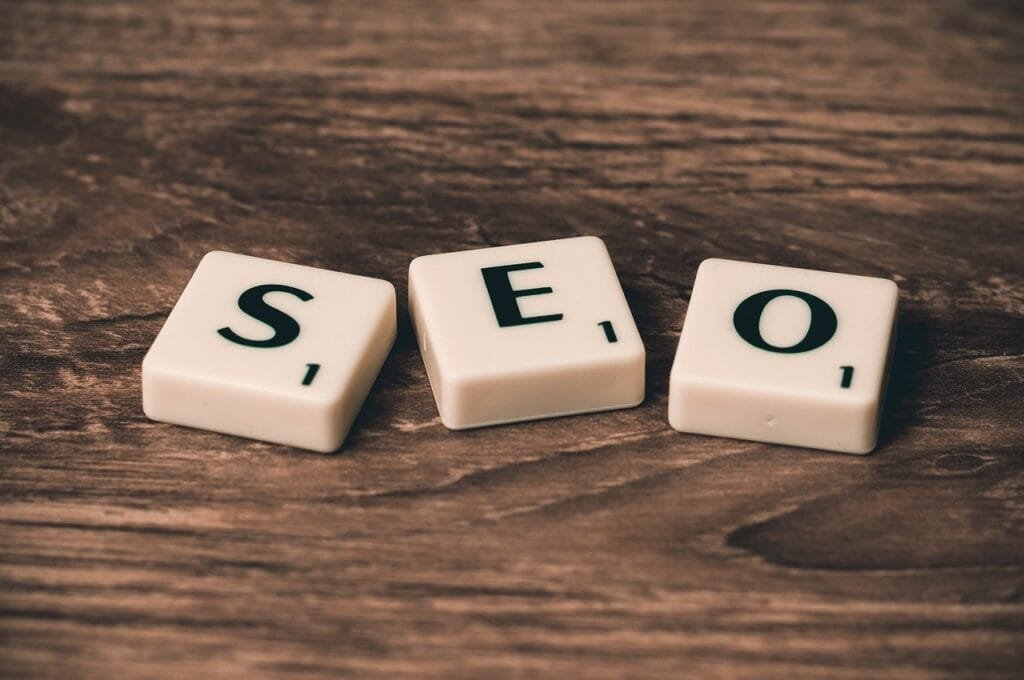This Article has been revised, edited and added to, by Poulomi Chakraborty.
- Exploring the Differences: Content Marketing vs. PPC
- How Content Marketing and PPC Support Each Other
- Finding the Right Balance Between Content Marketing and PPC
- Tactical Insights on Blending PPC and Content Marketing
- Optimizing Landing Pages for Both Strategies
- Leveraging Keyword Insights
- Coordinating Offers Across Both Channels
- Retargeting Strategies for Increased Conversions
- A/B Testing Ad Creative and Content
- Building a Strategic Foundation
- Developing Data-Driven Keyword Strategies
- Adapting Content Formats to User Intent
- Experimenting With Retargeting Campaigns
- Nurturing High-Value Leads With Integrated Strategies
- Actionable Ways to Integrate PPC and Content Marketing
- Conclusion
In today’s competitive digital landscape, standing out requires more than just a single tactic. It’s all about leveraging the right blend of strategies. Picture this: content marketing and pay-per-click (PPC) advertising—two seemingly different disciplines coming together to form a powerhouse duo in your digital marketing toolkit. On one side, we have content marketing, providing valuable, authentic information that builds trust and nurtures long-term relationships. On the other side, PPC advertising quickly drives targeted traffic and conversions. What happens when you fuse these two together? You get a seamless blend of organic and paid strategies that complement and boost each other to achieve your business goals.
In this article, we’re going to take a deep dive into how these two strategies can work in harmony. We’ll show you why content and PPC aren’t just parallel roads in digital marketing—they intersect in ways that multiply your impact.
Exploring the Differences: Content Marketing vs. PPC

To better understand how content marketing and PPC work together, it’s important to grasp their individual characteristics and strengths.
Content Marketing: This strategy is all about creating, curating, and sharing valuable information that resonates with your audience. It’s not focused directly on selling but rather on informing and engaging people, leading to a stronger brand connection. Content marketing takes many forms, such as blogs, videos, eBooks, podcasts, and infographics. Each type of content serves a purpose: educating, entertaining, or inspiring your audience to take a specific action over time. The ultimate aim is to foster trust and cultivate loyalty, which can later translate into conversions.
PPC Advertising: PPC is a more immediate and transactional strategy. In PPC campaigns, you create ads and bid on keywords to display your content to a highly targeted audience. You’re essentially paying for clicks, meaning every time a user clicks on your ad, you pay the advertising platform. This model allows for rapid data collection and fast results. Google Ads, Bing Ads, Facebook Ads, and other PPC platforms let you define your audience based on location, age, interests, and more, offering instant visibility to potential customers.
Understanding the Core Objectives
For startup founders, grasping the fundamental differences between content marketing and PPC is vital for allocating limited resources effectively. Content marketing is primarily about building a sustainable relationship with your audience. It involves creating content that adds value, educates, and engages potential customers over time, fostering trust and brand loyalty. This method is less about instant results and more about establishing a solid foundation for long-term brand success.
In contrast, PPC is about achieving immediate visibility and fast results. It’s particularly useful when you need to drive traffic, generate leads, or boost sales in a short period. This strategy allows startups to appear at the top of search results quickly, directly competing with larger, more established companies. The immediacy of PPC can be crucial for testing product-market fit, launching new products, or capitalizing on time-sensitive opportunities.
Strategic Deployment in Early Stages
For startups, where every dollar counts, integrating both content marketing and PPC strategically can yield substantial benefits. Initially, a startup might invest in PPC to drive quick wins and initial traffic, gathering data about customer behavior, preferences, and the effectiveness of different messaging. This immediate feedback is invaluable and can be used to optimize your product offerings and refine your market positioning.
Simultaneously, the insights gained from PPC campaigns should feed into a long-term content strategy. For example, keywords that convert well in PPC can be the basis for SEO-focused articles, helping your website rank organically for the same terms. This dual approach not only maximizes your digital footprint but also creates multiple touchpoints for engaging potential customers, enhancing the customer journey from awareness to decision-making.
Balancing Cost with Impact
For startup founders, budget management is often a primary concern. Content marketing, while generally lower in cost compared to PPC, requires a significant investment of time before it yields fruit. The content needs to be high-quality, relevant, and consistently updated to keep the audience engaged and to satisfy search engine algorithms. This slow-building strategy is crucial for long-term success but may not align with the immediate needs of a cash-strapped startup.
PPC, on the other hand, requires a financial investment upfront but can lead to immediate results. The key for startups is to use PPC not just as a standalone tactic but as a booster for content dissemination. Promoting high-value content pieces through targeted PPC ads can help increase their reach and effectiveness, accelerating the impact of your content marketing efforts.
Tailoring Strategies to Startup Needs
Every startup should tailor its approach based on specific business goals, target audience, and budget constraints. If the goal is to quickly validate a business idea or a product, PPC can provide quick insights into market demand and customer response. As the business grows and begins to understand its audience better, it can ramp up content marketing efforts to build deeper relationships and establish thought leadership.
Incorporating PPC data to refine content ensures that the content you produce is not only engaging but also targeted and strategic, addressing the specific needs and interests of your audience. This makes your content marketing efforts more effective and increases your overall marketing ROI.
While content marketing builds credibility over time, PPC attracts users ready to convert. When the two work together, you have a powerful funnel that brings immediate conversions while nurturing leads in the long run. Curious to see how these two strategies intertwine and complement each other?
How Content Marketing and PPC Support Each Other

Data-Driven Synergy
The power of PPC advertising lies in the wealth of data it provides. You can gain invaluable insights into keyword performance, audience behavior, and conversion rates, all of which can feed directly into your content marketing strategy. By analyzing which keywords drive the most traffic and conversions, you can refine your content strategy to include these high-performing terms. For instance, if you notice specific keywords are outperforming others in your PPC campaigns, consider developing content around those topics to rank organically.
Conversely, the data from your content marketing efforts—such as popular blog posts, video engagement rates, and organic keyword rankings—can guide your PPC campaign optimizations. You may find that content about particular topics is driving significant traffic to your site but not converting well. This insight helps you refine your PPC targeting, focusing on more specific, higher-intent keywords or crafting ad copy that aligns with the content that’s resonating with your audience.
Strengthening Brand Messaging
Content marketing gives your brand a unique voice and personality, providing in-depth information that resonates with your audience. PPC campaigns, on the other hand, are your chance to amplify this voice with targeted messaging. By ensuring your ads mirror the language, tone, and values present in your content, you present a cohesive brand identity across paid and organic channels. This consistent messaging reassures your audience, making them more likely to engage with both your ads and content.
If a user encounters an ad that leads to a landing page filled with rich content supporting the message, they are far more likely to convert. By aligning your PPC campaigns with your content marketing strategy, you can direct users to a content-rich environment where their interest is further nurtured.
Enhancing Remarketing Strategies
Content marketing works wonders for engaging users and moving them down the funnel. However, not all visitors will convert on their first visit. This is where PPC remarketing strategies shine. By retargeting visitors who have already engaged with your content but didn’t convert, you can re-engage them with tailored ads.
For example, a user might read a blog post about solving a specific problem but leave before signing up for your product or service. Later, they may see your remarketing ad offering a free eBook or webinar on the same topic, enticing them to click through and continue their journey with your brand. By strategically using remarketing lists, you can present tailored content based on their previous interactions, nurturing leads more effectively.
Faster Content Promotion
Content marketing can be a slow burn, often taking months to see significant returns. PPC offers a way to accelerate results by driving immediate traffic to your latest content. When you publish a new blog post, video, or product page, a PPC campaign can instantly generate buzz and bring visitors to your site. This early traffic not only helps you quickly identify content that resonates with your audience, but also aids in organic ranking, as search engines see the positive user engagement as a quality signal.
Creating a Unified Customer Journey
Content marketing and PPC work together to create a unified customer journey that guides potential buyers from initial awareness to final conversion. For startup founders, this means developing a consistent narrative that addresses different stages of the buyer’s journey. PPC campaigns can be the initial touchpoint, capturing attention with compelling headlines and targeted offers that attract specific demographics. The content that follows—whether blog posts, guides, or webinars—should reinforce this messaging, providing a seamless transition for the customer.
For example, a PPC ad might target a pain point that resonates with the audience, leading them to a landing page with detailed information. That page can include links to blog posts, eBooks, or case studies that further explain solutions and position the brand as a trustworthy resource. This strategic sequencing aligns your PPC and content marketing strategies, ensuring that users are nurtured at every step.
Supporting Thought Leadership
Thought leadership is essential for startups aiming to differentiate themselves in competitive markets. Content marketing helps establish a unique voice by delivering in-depth articles, guides, and other resources that position the company as an industry expert. PPC amplifies this content, making sure it reaches the right audience. By targeting decision-makers through paid ads, startups can directly connect with individuals who are actively searching for solutions and are more likely to engage with thought-provoking material.
Startups should prioritize PPC campaigns that promote high-value thought leadership content, such as white papers or webinars, which demand a higher level of audience commitment. These campaigns can build credibility and foster long-term relationships, gradually converting prospects into loyal customers.
Building an Effective Retargeting Loop
In content marketing, not every visitor will convert immediately. This is where PPC retargeting becomes critical. By tracking users who have consumed content but didn’t take further action, startups can develop PPC ads that remind them of the brand’s value proposition. For example, if a user visited a blog post but didn’t sign up for a newsletter or download an eBook, a retargeting ad can offer these opportunities again.
This approach can significantly enhance conversion rates by reconnecting with prospects already familiar with your brand. Additionally, you can segment retargeting lists to ensure your ads are highly relevant, targeting visitors who have engaged with particular types of content with offers that are complementary.
Refining Customer Personas Through Data
PPC provides detailed data on click-through rates, ad performance, and conversion metrics, which can be used to refine your understanding of customer personas. For startup founders, this data is gold, offering insights into what resonates with specific audience segments. You can then use this information to tailor your content marketing strategy, ensuring your content speaks directly to the needs and interests of your most promising prospects.
Analyze the demographics, search intent, and behavior of users who click through PPC ads and convert. Use this data to guide your content creation, developing more targeted blog posts, videos, and guides that will appeal to these segments. The more closely your content aligns with user expectations, the higher your chances of converting them.
Strengthening Brand Recognition
A unified approach to PPC and content marketing can significantly boost brand recognition. When users encounter your ads and follow them to content that consistently reflects your brand’s tone and values, it strengthens their perception of your brand. Over time, they become familiar with your unique value proposition, making them more likely to choose your solution over competitors.
For startup founders, this means ensuring every piece of content reflects the brand identity that your PPC ads promote. This might involve using similar imagery, consistent language, or addressing common pain points. By reinforcing the same message across paid and organic channels, you build a strong, recognizable brand that resonates with your target audience.
Using PPC to boost new content allows you to gain momentum early, increasing the chances of virality and ensuring your content reaches the right people quickly.
Finding the Right Balance Between Content Marketing and PPC

Funnel Alignment for Lead Nurturing
Content marketing and PPC excel at different stages of the buyer’s journey, but together they ensure full coverage across the funnel. Early-stage content like blog posts and infographics help build awareness, while PPC ads targeted at high-intent keywords capture the attention of users actively looking to make a purchase.
Middle-of-the-funnel content, such as webinars and case studies, engages those who are aware of their problem but need more information to choose a solution. PPC ads can promote this content, specifically targeting users who have previously interacted with top-of-the-funnel material. This brings them back to your brand and provides more comprehensive information that nurtures their intent to convert.
At the bottom of the funnel, PPC ads can present direct offers, like free trials or product demos, and direct users to landing pages packed with testimonials and detailed information. These reinforce the value of your offering and encourage users to take that final step toward conversion. Pairing this with personalized content, like tailored recommendations, creates a seamless journey that guides leads through the stages with efficiency.
Increasing Efficiency With Budget Allocation
Blending PPC and content marketing also improves your ability to allocate budgets more effectively. While PPC requires a consistent investment, content marketing is largely a fixed-cost endeavor. The insights gained from PPC campaigns help you prioritize where to allocate resources in content creation, ensuring that you’re generating material that matches your audience’s interests and conversion behaviors.
On the flip side, strong content marketing that drives high-quality organic traffic allows you to reserve PPC budgets for strategic campaigns, such as competitive keyword targeting or boosting underperforming content. By analyzing the performance of both organic and paid campaigns, you can discover patterns and identify gaps to refine where and how your resources are best utilized.
Boosting Search Engine Visibility
PPC and content marketing both play crucial roles in search engine visibility. With content marketing, you’re creating authoritative and relevant pieces that earn organic rankings over time. But PPC can enhance your visibility by ensuring that your brand appears prominently in sponsored search results. This dual presence reinforces your credibility and increases the likelihood that users will engage with your brand.
Furthermore, the insights you gain from PPC campaigns, like click-through rates (CTR) and ad copy performance, can help refine your organic search strategy. By identifying high-performing keywords and ad formats, you can adapt your SEO approach and content creation to align with what resonates with your audience.
Testing New Markets and Messaging
PPC is particularly effective for testing new markets and messaging due to its rapid feedback loop. You can quickly assess whether new keywords or audience segments are responsive to certain messaging by running short-term campaigns. If the response is positive, it’s worth investing in creating content that appeals to these new segments, and if it’s negative, you can adjust your approach without wasting significant resources.
For instance, if a PPC campaign reveals that a particular demographic or market responds well to certain ad creatives or product positioning, you can translate these insights into content marketing. Create tailored blog posts, guides, or case studies that reinforce these successful messages.

Related: Check out our free SEO suite

Tactical Insights on Blending PPC and Content Marketing
Optimizing Landing Pages for Both Strategies
Landing pages are essential for converting traffic from both PPC and content marketing efforts. Crafting pages that cater to both strategies requires a blend of immediate impact and comprehensive value.
For PPC Traffic: Focus on delivering instant value to align with user intent. If someone clicks on a PPC ad promising a solution, the landing page must reinforce that promise immediately with a compelling headline, concise benefits, and a clear call-to-action. Include engaging visual elements like videos or infographics to capture interest quickly.
For Content Marketing Traffic: Landing pages should offer more in-depth information for those who arrive via blogs, eBooks, or webinars. Visitors here may be earlier in the funnel, so provide detailed value propositions, customer testimonials, and FAQs that help nurture their decision-making process.
Leveraging Keyword Insights
Keyword data from both PPC and content marketing can inform each other to refine your overall strategy.
From PPC to Content: Identify high-converting keywords and create blog posts, videos, or guides centered around those terms. For example, if a specific keyword consistently drives conversions via PPC, developing content optimized for that term can increase organic traffic.
From Content to PPC: Conversely, analyze the organic keywords driving traffic to your site and use them to build new PPC campaigns. If blog posts optimized for long-tail keywords perform well, bid on those keywords in PPC campaigns to capture a broader audience.
Coordinating Offers Across Both Channels
Offering consistent and complementary incentives across PPC and content marketing campaigns strengthens your overall message.
PPC Ads: Test different offers in PPC ads to identify which resonates most with your audience, like discounts, free trials, or downloadable guides. Use high-performing offers to drive targeted PPC campaigns to tailored landing pages.
Content Offers: Develop content offers that complement PPC incentives, such as webinars that expand on downloadable guides or blog posts that offer deeper insights into trial benefits. This encourages cross-promotion and builds a stronger narrative that nurtures leads effectively.
Retargeting Strategies for Increased Conversions
Retargeting visitors who engaged with your content but didn’t convert is a highly effective tactic.
Content-Based Retargeting: Segment audiences based on the content they’ve interacted with and present ads that guide them to the next step. For instance, retarget visitors who read a blog post on a particular topic with PPC ads offering a related eBook or webinar.
PPC-Based Retargeting: Use retargeting lists in PPC campaigns to re-engage users who have already seen or clicked on your ads but didn’t convert. Adjust ad messaging to reflect their past engagement and offer exclusive deals or content to entice them back.
A/B Testing Ad Creative and Content

Regular A/B testing is vital to maximize the effectiveness of both PPC ads and content marketing.
PPC A/B Testing: Test different ad formats, headlines, and CTAs to see which combinations yield the highest click-through and conversion rates. This provides quick insights into what messaging resonates best.
Content A/B Testing: Experiment with blog post titles, email subject lines, or video thumbnails to see what attracts the most engagement. The winning variations can guide the overall direction of your content marketing strategy.
Building a Strategic Foundation
Startup founders should lay a strong strategic foundation before blending PPC and content marketing. This begins with setting clear goals that align with overall business objectives. For instance, if brand awareness is the priority, focus on crafting content that educates potential customers while using PPC ads to reach broader, targeted audiences. The strategy should also involve mapping out a customer journey, where PPC ads drive traffic to carefully designed landing pages with content that nurtures users toward conversion. This journey should be seamless, making it easy for visitors to understand your value proposition and move to the next stage.
Developing Data-Driven Keyword Strategies
One of the most strategic uses of both PPC and content marketing is developing a comprehensive keyword strategy. PPC provides immediate data on high-performing keywords, which can inform your SEO-focused content efforts. Founders should analyze PPC search terms to identify which keywords drive traffic and conversions, then build content optimized for those terms. Conversely, content marketing allows for in-depth exploration of long-tail keywords that aren’t always feasible to target via PPC. These longer phrases provide rich opportunities for startups to position themselves in niche markets, where they can develop high-ranking articles or guides. By using PPC data to refine content marketing and vice versa, startups can effectively own their keywords.
Adapting Content Formats to User Intent
Startups should leverage different content formats to align with user intent and stage in the customer journey. PPC ad insights can reveal whether users are searching for top-of-the-funnel informational content or ready-to-buy product comparisons. Startup founders should adapt content accordingly. For instance, video content may be more suitable for quick PPC campaign engagement, while long-form articles or white papers might be better suited for nurturing leads who are ready to delve deeper. By matching PPC ad content to targeted landing pages or blog posts, you create a cohesive experience that resonates with the audience’s needs.
Experimenting With Retargeting Campaigns
Retargeting campaigns can help reinforce your content marketing message by capturing potential customers who have already shown interest but didn’t convert. Startup founders should experiment with different types of retargeting, such as display ads for top-of-the-funnel users who visited informational pages and search retargeting for those who browsed pricing or product details. By segmenting these retargeting lists, you can tailor content offers to their previous interactions. For example, guide users who viewed a product page toward a comprehensive comparison guide or discount offer. This approach ensures that your PPC retargeting directly complements and enhances your content marketing strategy.
Nurturing High-Value Leads With Integrated Strategies
While PPC ads can quickly attract new prospects, nurturing them into high-value leads requires a blend of content marketing. Founders should identify high-potential leads from their PPC campaigns and enroll them in content-focused nurturing programs. Send them relevant newsletters, educational webinars, or exclusive eBooks to keep them engaged with your brand. This allows PPC campaigns to serve as a discovery channel, while content marketing builds deeper relationships over time. Combining these two tactics ensures that new leads receive consistent value throughout their journey, increasing the likelihood of conversion.
Actionable Ways to Integrate PPC and Content Marketing

Creating PPC Ad Campaigns That Promote Evergreen Content
Evergreen content is invaluable because it remains relevant over time. You can utilize PPC campaigns to promote your evergreen content, such as in-depth guides, tutorials, or cornerstone blog posts. Ads targeting high-intent keywords should direct visitors to these comprehensive resources, providing them with the valuable information they seek.
How to Do This:
- Identify evergreen content that aligns with popular PPC keywords.
- Craft compelling ad copy that reflects the benefits of the content.
- Use PPC audience targeting to find users most likely to find this content valuable, such as by location, age, or interests.
Using PPC to Support Seasonal Content Marketing Campaigns
Seasonal content marketing campaigns—whether related to holidays, events, or industry trends—are powerful tools for capturing timely interest. PPC can give an immediate boost to these campaigns by driving traffic to seasonal landing pages.
How to Execute:
- Develop seasonal content (e.g., a blog post about gift ideas for the holidays or a guide to summer travel).
- Build PPC campaigns around specific seasonal keywords and audience interests.
- Ensure landing pages are tailored to the season, offering relevant products, guides, or promotions.
Supporting Product Launches With a Blended Strategy
Launching a new product or service requires an integrated approach. PPC ads can build awareness and direct immediate traffic to landing pages, while content marketing nurtures interest.
Implementation Steps:
- Create a series of blog posts or videos explaining the new product’s benefits and features.
- Launch a PPC campaign targeting keywords and demographics relevant to the new product.
- Use remarketing ads to re-engage those who visited the product’s landing page but didn’t convert, offering additional content or promotions to sway their decision.
Aligning PPC Ad Copy With Content Marketing Themes
A cohesive brand message builds trust and recognition. Ensure your PPC ad copy aligns with the themes, language, and values portrayed in your content marketing.
Steps to Achieve This:
- Audit your content marketing to identify the primary themes that resonate with your audience.
- Craft PPC ad copy that incorporates these themes and reflects the same tone and language.
- Optimize your landing pages to continue this messaging, reinforcing the brand identity seen in your ads and content.
Conducting Joint Analytics for Continuous Improvement
Analytics are vital for refining your digital strategy. By jointly analyzing PPC and content marketing performance data, you can uncover patterns and make informed adjustments.
Actionable Plan:
- Regularly review the performance data from both PPC and content campaigns.
- Identify keywords that drive conversions in PPC and compare them with high-performing organic keywords.
- Track which content leads to higher engagement or conversions and use this data to refine both organic and paid strategies.
- Adjust future PPC campaigns to support content with high engagement rates, and create new content around high-converting PPC keywords.
Conclusion
The synergy between content marketing and PPC creates a powerful, comprehensive digital strategy that delivers immediate results and long-term brand loyalty. By understanding the unique strengths of each approach and how they complement one another, marketers can build a more cohesive brand message that resonates across the entire customer journey. Leveraging PPC data informs smarter content creation, while well-crafted content guides PPC targeting and improves ad relevance. Together, they provide valuable insights for continuous refinement, ensuring the right balance between immediate conversions and nurturing future leads.
This collaboration accelerates the promotion of new and seasonal content, aligns messaging to meet user intent, and strengthens brand recognition through consistent storytelling. In a digital landscape that demands efficiency and creativity, this seamless blend of organic and paid strategies maximizes your reach, influence, and return on investment. The combination isn’t just about tactics; it’s about creating a holistic, data-driven framework that keeps your marketing efforts focused, agile, and successful.
Read Next
- Personalization in Digital Marketing: Crafting Tailored Experiences for Your Audience
- Digital Marketing in the Age of Voice Search: Adapting to New User Behaviors
- Digital Marketing for B2B: Strategies for Long Sales Cycles and Relationship Building
- The Science Behind Viral Campaigns in Digital Marketing
- Content Marketing in the Digital Age: Adapting to New Trends and Technologies






















Comments are closed.